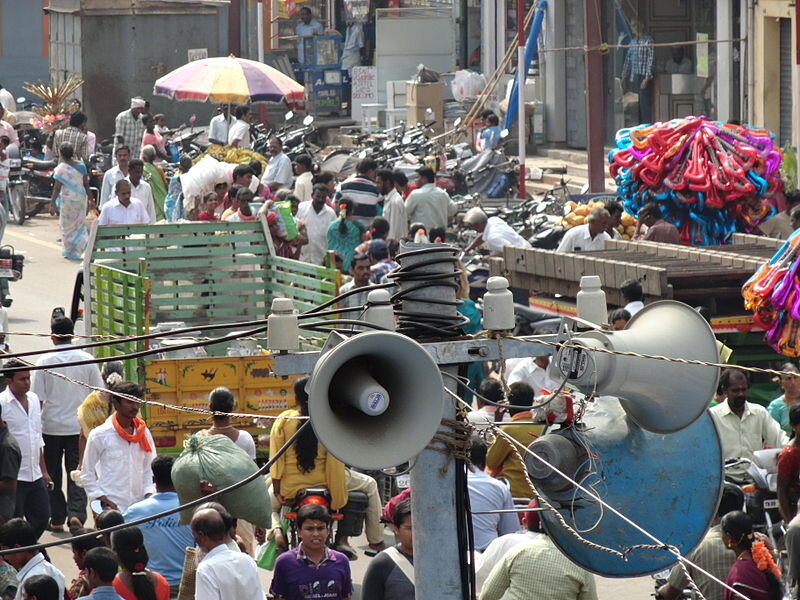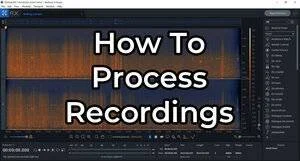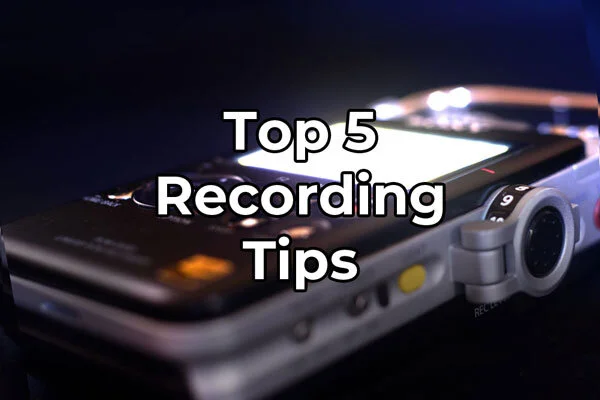Avoiding Noise Pollution: The Best Times to Record
Learn how to navigate around noise pollution to get the purest recordings possible.
Time of day is an extremely important factor in field recording, no matter what genre you record. Noise pollution will ruin any field recordist’s sound. By choosing the best time to record, we can limit these interruptions and get better, longer and more detailed recordings.
The Best Time to Record
Refer to the below table to find the best days and times to avoid the most common forms of noise pollution. Continue reading for more detailed information and advice.
| Noise | Best Day | Best Time (Week) | Best Time (Weekend) |
|---|---|---|---|
| Aircraft | Tuesday & Wednesday | 11pm-6am | 11pm-6am |
| Vehicles | Saturday & Sunday | 7pm-7am | 3pm-10am |
| People | Sunday | 10pm-7am | 10pm-8am |
Table Description:
Noise - the source (origin) of unwanted sound.
Best Day - record on this day to minimize noise from specified source.
Best Time (Week) - try recording within these hours from Monday to Friday to further limit noise.
Best Time (Weekend) - same as above but for Saturday and Sunday only.
My Story
I love recording the sounds of nature. Walking deep into nature, opening my senses to receive the many sights, sounds and smells, there is no place more peaceful. While exploring, I discover a scene that I would like to record. I quietly unpack and setup my equipment, double check my settings and press record. I find a comfortable spot close by and relax as nature unfolds before me.
And then an airplane flies by…followed by another. Have you ever fully appreciated how long an airplane remains audible? In my experience the average flight lasts for one minute and some planes can persist for three minutes!
I once recorded 4 hours of audio on a lake and the aircraft traffic was so great, the longest section of audio I could salvage was only 4 minutes.
It was this trip that motivated me to research when the best times are for avoiding noise pollution.
RELATED: How To Find Quiet Nature Near You
Noise Pollution
commons.wikimedia.org
Noise is any unwanted sound. Pollution is the action or state of making or being made impure. When we put them together the definition of noise pollution becomes, unwanted sounds that contaminate an existing sound or group of sounds, making it impure.
For field recordists, noise pollution exists in many forms. The most common sources of noise pollution are:
Aircraft - airplanes and jets
Vehicle - cars, trucks, boats and power equipment
People - walking, running and talking
This article will look into each of these kinds of noise pollution and teach you how to avoid them.
Aircraft
commons.wikimedia.org
Planes, and jets are the most difficult forms of noise pollution to avoid. With people constantly flying for work, vacation and travel, almost the entire Earth is subjected to their noise. In fact, an average day sees 145,000 flights, that’s over a million flights in just one week!
To learn how best to avoid their noise, let’s take a deeper look into flight statistics.
DAY OF THE WEEK:
By analyzing flight data, I found the most popular days to fly are Friday, Sunday and Monday. If aircraft noise is frequently a problem for you, these are the worst days to record on. Most business flights leave on Monday and return on Friday. Vacationers typically leave on Friday and come home Sunday. With many people returning and leaving airports on Friday, this is the single worst day to record on.
Conversely, the least popular days are Tuesday and Wednesday, followed by Thursday and Saturday. These days simply don’t make a lot of sense for people to fly on. Saturday may seem like a popular choice but with the weekend already half over, no one wants to waste a potential vacation day traveling; better to leave late Friday and have the whole weekend to relax.
TIME OF DAY:
Okay, so we know the best days to record are Tuesday and Wednesday but what about the best time?
Most airports have to follow noise abatement ordinances. This means that during select hours, takeoff and landing of aircraft, or specific planes above a specific decibel level, is not allowed. These “no-fly” hours typically start at 11:00pm and last until 5 or 6:00am. These times vary so research the airports close to you for specifics.
As a general rule of thumb, the best times of day to avoid aircraft noise are from 11:00pm to 6:00am.
For more detailed information, see this article. For the year 2017, they took the flight data from the top carriers worldwide to determine the busiest flight times in the US, Europe, South America and the Middle East.
Vehicles
commons.wikimedia.org
Vehicles are the second most common form of noise pollution. Unlike aircraft, cars are more easily avoided since they are limited to roads. If your subject allows for it, try distancing yourself from any roads.
DISTANCE:
As a general rule of thumb, one mile is enough distance to mute vehicle sounds. Google Maps is a great tool for discovering locations meeting this distance.
For example, if you are going to a state park, look up a trail map and the park’s location on Google Maps. Cross reference the two and determine which trail(s) are at least one mile away from any roads. Try marking possible locations on your phone so you can navigate to them once in the field. This technique works great for me!
DAY OF THE WEEK:
If you cannot simply “run away” from roads, you’ll want to know what days see the least vehicle traffic to minimize vehicle noise pollution.
Car insurance companies know this answer the best so that’s where I did my research. I found that the days of the week with the most vehicle traffic are Wednesday, Thursday and Friday.
The best days to record, with the least vehicle traffic are Saturday and Sunday.
TIME OF DAY:
Once again, I turned to insurance companies to find the best answer. Vehicle collisions are a good indicator of total traffic. The more cars on the road, the more likely a crash becomes. By this logic, the safest times to drive are also the periods with the least amount of cars on the road.
During Monday-Friday, there is substantial traffic levels from 7am to 7pm. The largest peaks in activity are during rush hour, between 8 and 9am and again from 2 to 6pm.
On weekends, the busiest travel times are from 10am to 3pm.
Any time outside of these mentioned hours is a good time to record. The absolute, best time on any day is from midnight to 6am.
Take advantage of these times to record less traffic and more pure sounds!
People
commons.wikimedia.org
People may last on this list, but they are a major source of noise pollution. All forms of noise pollution we’ve covered so far are caused by people. As if that’s not bad enough, people themselves are walking, talking noise machines! I try to avoid them at all costs and I’ll share my tips for doing so with you.
AVOIDANCE:
People are a predictable bunch. We all know where the popular locations are with people crawling all over like ants. Don’t go to those locations, especially not on during the weekend. If you have to visit a popular place to record, try going during the week when most people are working.
PLACEMENT:
If you are recording in an area with human traffic, set up your recording equipment away from established trails or other common spots. The more distance you can put between your gear and people walking by, the better.
If you are in nature and go off the trail, be mindful of the plants growing beneath your feet. Do your best to not step on any vegetation. If you will be returning to this location in the future, take a different path each time. This will allow nature to heal from the damage your feet will inevitably cause.
DAY OF THE WEEK:
Most people expend all of their pent-up energy on Friday and Saturday. This energy slowly builds during the work week as most humans sit for prolonged hours staring at a computer screen. That means that on Sunday, most people sit in their homes doing mundane chores while dreading going back to work on Monday. This makes Sunday the best day for recording.
TIME OF DAY:
People spend most of the active time making noise in some form. Because of this, the best time to limit human noise is while they are sleeping. Most people are asleep between the hours of 11pm and 6am, making this time period the best time to record.
Conclusion:
Planes, cars and people are all sources of unwanted noise. With the help of this article, I hope you feel more prepared and motivate to capture some really great recordings! Are there other forms of noise pollution that you encounter regularly? I’d like to hear about it. Please send me a message here.
Support Acoustic Nature
If you enjoyed this post and would like to help support Acoustic Nature, please consider "buying me a coffee" or becoming a Patreon with the buttons below.
As a thank you for your support, Patreon supporters receive a copy of Field Recording For Beginners, exclusive access to the full Behind The Sounds video series, nature sound library downloads, and more.
If you are unable to support the site financially, please share this post with others, or leave a comment below letting me know you enjoyed this post! Both are free and help the website grow. Thank you ♫
Thanks for reading,
-Jared

















